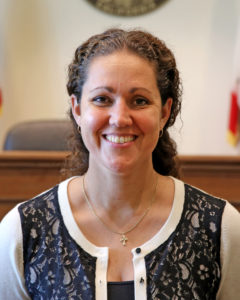This week Chapman Law Review would like to take a moment and recognize the academic accomplishments of one of our 3L members, Bethany Ring.
Bethany authored an article which sought to test the validity of legal impact predictions made immediately after SCOTUS decisions. Specifically, Bethany examined the Reed v. Town of Gilbert case in which the Supreme Court applied strict scrutiny to a city sign ordinance. Literature predicted far-reaching impacts on First Amendment jurisprudence. By examining all published court decisions that cited  to Reed over the past four years, Bethany was able to show that the predictions of negative repercussions had not come to fruition. This article will appear in the upcoming issue of the Chapman Law Review.
to Reed over the past four years, Bethany was able to show that the predictions of negative repercussions had not come to fruition. This article will appear in the upcoming issue of the Chapman Law Review.
In addition to her most recent legal scholarship, Bethany has published numerous articles which address fascinating and important issues, spanning from rainfall filtration, to climate modeling use ice volume data, and assessments of computer modeling for hydraulics. Below is a more detailed description of a few of Bethany’s publications and presentations.
Assessment of Computer Modeling
This article compared widely accepted computer models for hydraulics (the flow of water) and discussed the importance of accurately defining your initial conditions and parameters. It concluded that usually, the simpler the model, the more accurate it is for expert purposes because it is less susceptible to scrutiny on cross-examination.
Rainfall Return
This article examined discrepancies in rainfall return frequency estimates between three major sources – National Weather Service, CA Department of Water Resource, and Los Angeles County Department of Public Works. Because each statistical calculation is premised on differing initial assumptions, the statistic vary. This is significant because experts will use whichever result is best for their clients rather than present all three estimates and explain why they differ. If two experts present two different models without articulating why they differ, the judge or jury tends to believe whoever presents the information better without ever understanding why scientific approaches can truly yield varying results.
Rainfall Infiltration
This article examined the statistics of rainfall (what hits the ground) and related these statistics to infiltration rates (what soaks into the ground). By looking at some of the factors that retard infiltration and taking them into account, the statistics for rainfall can be massaged and applied to infiltration.
Water Quality Data
This presentation focused on an abnormal storm cell that came to shore in Newport Beach in the 1998 El Nino season. The storm was not picked up on any rain gauges, but radar indicated that its intensity. Bethany presented this project at the Floodplain Management Association’s annual conference at a time when radar was just starting to be accepted in the courtroom as a reliable instrument for experts to use.
Currently, Bethany serves as the Senior Symposium Editor for the Chapman Law Review. She plans to pursue a career in public interest law or municipal defense post-bar. Please join the Chapman Law Review in thanking Bethany for her valuable contributions to academia in a variety of critical fields.